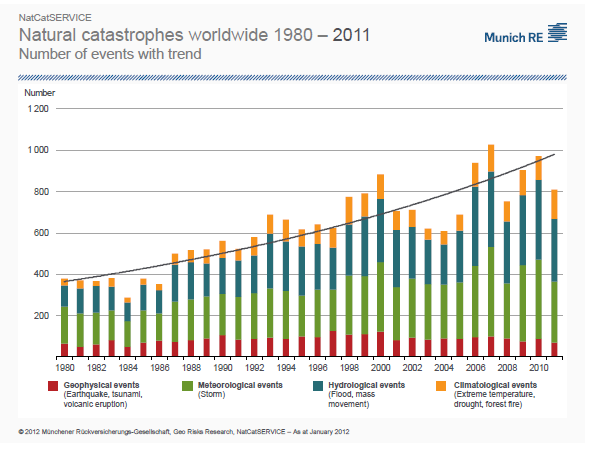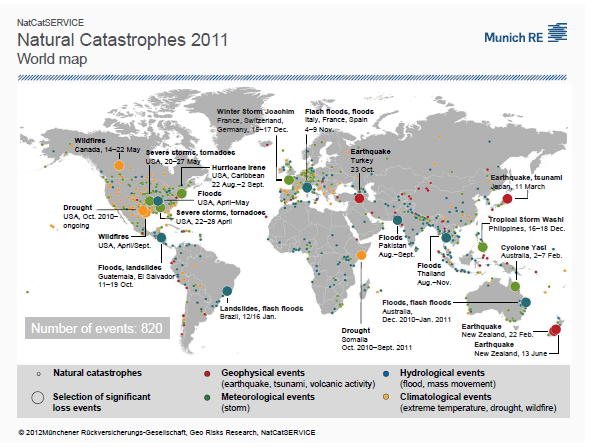A Sunburnt Country
Posted on 7 March 2012 by Glenn Tamblyn
I Love a Sunburnt Country
Sometimes we get important insights from the most unexpected of places. Poets & Insurance Companies. Not what we might always connect together. But you never know what they might be able to offer...
In my home country of Australia, one of the iconic poems in our history is often referred to simply as ‘I Love a Sunburnt Country’. Written by Dorothea MacKellar it was originally published in the London Spectator in 1908 as ‘Core of My Heart’. Later she called it simply ‘My Country’. It is often called ‘I Love a Sunburnt Country’ by Australians because, like most of us, we reduce the world around us to simple images and ideas. We loose the vivid wonderful complexity but we gain ease of comprehension. So too it is with Dorothea’s poem. We remember the bits that grab our soul rather than the whole poem.
Few Australians would have ever heard the first stanza of the poem. But lines from the second stanza can still make the hairs on the back of our neck stand up. Young Dorothea wrote this in England where she was travelling with her father and feeling quite homesick.
The love of field and coppice,
Of green and shaded lanes.
Of ordered woods and gardens
Is running in your veins,
Strong love of grey-blue distance
Brown streams and soft dim skies
I know but cannot share it,
My love is otherwise.
I love a sunburnt country,
A land of sweeping plains,
Of ragged mountain ranges,
Of droughts and flooding rains.
I love her far horizons,
I love her jewel-sea,
Her beauty and her terror -
The wide brown land for me!
Today many Australians would not even know who Dorothea MacKellar was. But ‘I love a sunburnt country’ and ‘Of droughts and flooding rains.’ still resonate, even though few now know their provenance.
So what has a bit of romantic, patriotic poetry from a century ago to do with Climate Change? Dorothea used a single line that was prescient for our times. She only meant it about Australia. But the consequences of this apply around the world.
‘Of droughts and flooding rains’.
One of the predictions that arise from the theory of Global Warming is that as the climate system warms, as more energy accumulates in various parts of the system, weather in various ways will become more intense and also more erratic.
Storms might be stronger, or more frequent, Droughts more severe or frequent. Simply, the weather becomes harsher. Dorothea reveled in this aspect of ‘her’ Australia. And to a reasonable extent we still do. But anything can be taken too far.

Droughts in the Sahel kill people and devastate crops. Flooding rains kill people and devastate crops. We humans can thrive if the climate is benign. And we might thrill to some ‘climatic excitement’ as Dorothea did.
But not too much. Did the citizens of Bangkok thrill to their floods? Did Texans thrill to their drought and wild-fires? Today as I finish this post, citizens in three states in Australia are not quite thrilling to floods as they shelter in school gymnasiums.
So, what can we say about what Global Warming is doing to weather, particularly extreme weather events? We expect that the extremes will become more extreme over time. But what are we seeing so far, as opposed to what might happen in the future?
Because we are still only into the early phases of what Global Warming has in store for us. What evidence can we look at now that might give us an indicator of what the future holds?
It is common for people to try and assess current weather patterns and what they may portend for the future. Unfortunately, looking at any particular extreme weather event and asking ‘was this caused by Global Warming?’ doesn’t make a lot of sense. Global warming changes the likelihood of events, the odds. But it doesn’t definitely determine any single event. As one quote puts it, ‘Climate Change trains the Boxer, Weather throws the punches’.
So can we see specific evidence of changes in weather ‘events’. Have Typhoons in the South China Sea become more-or-less frequent or severe? Tornadoes in the US Mid-West? Floods in Central America? Blizzards in Siberia? Droughts in Africa?
Unfortunately each of these sorts of questions relates to particular measures of particular types of weather events in particular regions; none of these are global measures. In principle studies could amalgamate all these indices to try and produce a global index.
Or we could just use the information that has already been provided by groups who already do this!
The Re-Insurers of the world
We might be familiar with our local insurance company, but how many of us have heard of Re-Insurers? These are the companies that insure the insurance companies. They spread the risk around to try and prevent any single insurance company being wiped out by some major event. These are companies such as Swiss Re, Berkshire Hathaway / General Re, Hannover Re and Munich Re. And since they are dealing with insurance companies from all around the world, and their business is totally based on understanding what is really happening to risk out there in the real world, they are a useful source of information because real data about climate risks is central to their business.
Early this year Munich Re released a short report looking at catastrophic events around the world and their trend here.
The most interesting graph, that encapsulates a great deal is this one on page 4:
They have divided the events up into Geophysical, Meterological, Hydrological and Climatalogical. Here Geophysical is events such as Earthquakes, Tsunami's, Volcanic Eruptions. Obviously not related to the weather or climate. But the other three categories are.
And what Munich Re report is that Geophysical events, although they fluctuate from year to year, haven't meaningfully changed on frequency in 31 years. However, the other three categories have increased in frequency over that time. After removing the Geophysical events, the Weather/Climate related events have roughly tripled in 31 years.
It is important to remember here that Munich Re are reporting numbers of events per year that they classify as catastrophic. Another graph on page 5 of the report shows dollar value.
A Re-Insurer has no reason to distort their analysis. If they under-report they are in breach of their responsibilities to their share-holders. So to if they over-report. They are about the most honest source one could find for information on this because they have no motive to distort anything - the bottom-line doesn't lie.
It appears from a very simple data source that weather is becoming more extreme. More Storms, more Droughts and Flooding Rains. Just as expected.
And here they have graphed the trends for each category:
Dorothea's Droughts and Flooding Rains seen to be topping the list.
And for general interest here is where all the events happened in 2011:
No continent is immune from the effects.
Dorothea may have liked them, but we now seem to be getting more Droughts and Flooding Rains (and Storms and Wildfires and Landslides) than we would like. And the trend is rising.
Perhaps a fairly reasonable indicator of the future under Global Warming.
So on a slightly different note, to end with a bit more poetry - I am a sucker for this stuff.
Rudyard Kipling, 'Gunga Din'.
The hero of the poem, the servant Gunga Din, has died and the poem ends with this:
So I'll meet 'im later on
At the place where 'e is gone,
Where it's always double drill and no canteen;
'E'll be squattin' on the coals
Givin' drink to poor damned souls,
An' I'll get a swig in hell from Gunga Din!
Yes, Din! Din! Din!
You Lazarushian-leather Gunga Din!
Though I've belted you and flayed you,
By the livin' Gawd that made you,
You're a better man than I am, Gunga Din!
Perhaps we want to avoid needing to get a swig in Hell. Even from someone like Gunga Din.































 Arguments
Arguments

























 0
0  0
0 source.
There was also 205 6> magnitude quakes in 2011 so the graph will go up a bit from the image I have linked to.
Now tell me how this does not show an upward trend from 1980? Regardless of standard deviation the trend is up.
source.
There was also 205 6> magnitude quakes in 2011 so the graph will go up a bit from the image I have linked to.
Now tell me how this does not show an upward trend from 1980? Regardless of standard deviation the trend is up.
 The annual average is that determined by the USGS from observations since 1900. Indeed, it is quite droll of you to cherry pick a short period which gives the appearance of a rising trend when no such rise can be seen in centenial records:
The annual average is that determined by the USGS from observations since 1900. Indeed, it is quite droll of you to cherry pick a short period which gives the appearance of a rising trend when no such rise can be seen in centenial records:
 Figure 3 a from Engdahl and Villsenor. The slight upward trend in 6.5 plus earthquakes from the 1900s to the 1940s is probably an artifact due to improved observations as is shown by a lack of such a trend in magnitude 7 and 7.5 plus earthquakes, which being larger can be detected on a sparser network.
Figure 3 a from Engdahl and Villsenor. The slight upward trend in 6.5 plus earthquakes from the 1900s to the 1940s is probably an artifact due to improved observations as is shown by a lack of such a trend in magnitude 7 and 7.5 plus earthquakes, which being larger can be detected on a sparser network.







Comments